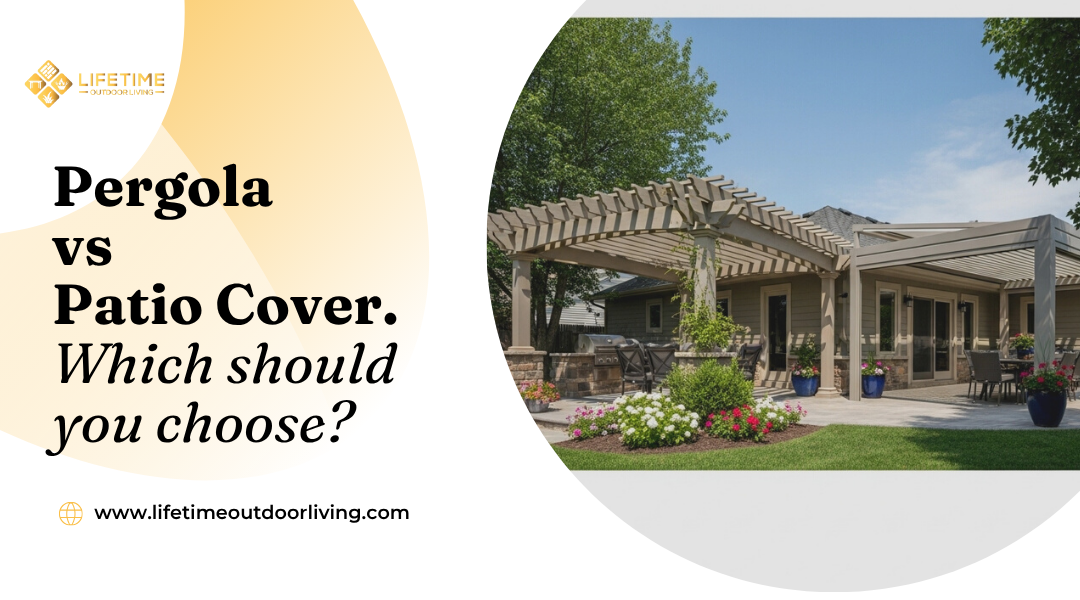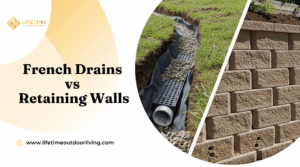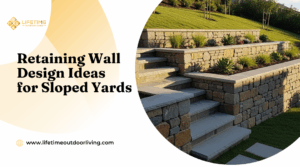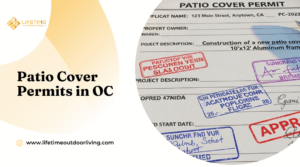When deciding between a pergola and a patio cover, homeowners often weigh style against function. A pergola offers an open, airy structure that provides partial shade and enhances the aesthetic appeal of an outdoor space. In contrast, a patio cover delivers full protection from sun and rain, making it a practical choice for year-round use.
Choosing between a pergola and a patio cover depends largely on your needs for shade, weather protection, and design preference. For those who want an elegant feature that allows light and breeze, a pergola is ideal. If complete shelter is a priority, a patio cover is better suited to extend usable outdoor living space regardless of weather.
Lifetime Outdoor Living, a trusted paving and outdoor remodeling expert in Laguna Beach, helps Orange County homeowners make this decision with tailored designs. Their experience ensures that each solution balances beauty, durability, and functionality to fit specific lifestyles and outdoor environments.
Knowing The Basics: Pergola vs Patio Cover
Pergolas and patio covers both provide outdoor shade and structure but differ significantly in design, materials, and function. Understanding these differences helps homeowners choose the right option for their space and needs.
What Is a Pergola?
A pergola is an open structure with vertical posts and crossbeams, often made of wood or metal. It provides partial shade while allowing sunlight and airflow. The design usually includes slatted or lattice roofs without a solid covering.
Pergolas are decorative and can support climbing plants, creating a natural canopy. They offer aesthetic appeal but limited protection from rain or intense sun.
They work well in gardens, patios, or pool areas where some sunlight is desired along with structure and style.
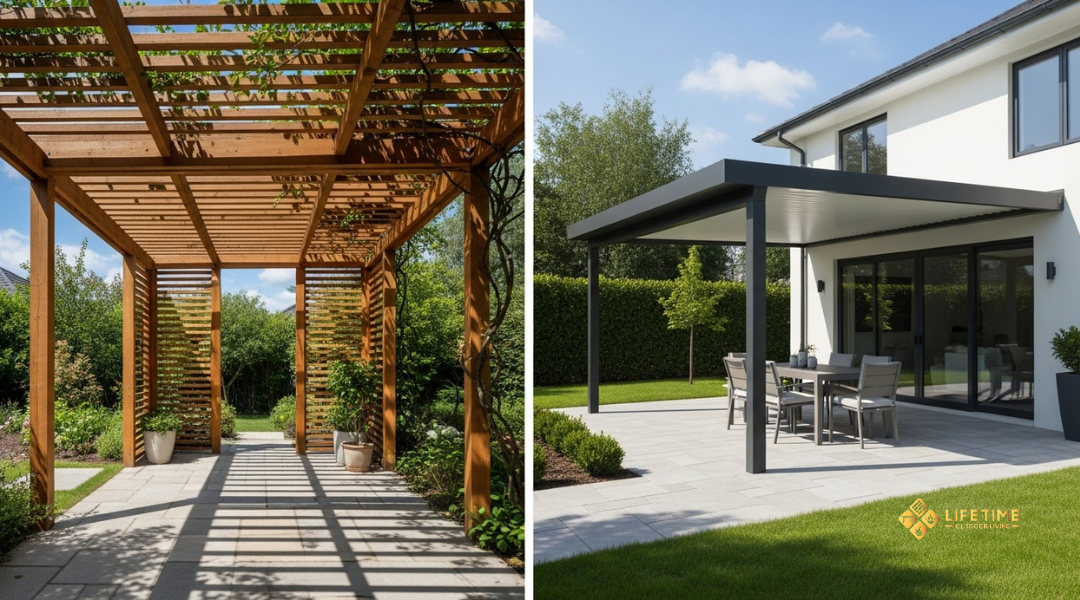
What Is a Patio Cover?
A patio cover is a solid overhead structure attached to a home or freestanding, typically made from wood, metal, or vinyl. It provides complete shade and protection from rain, unlike pergolas.
Patio covers use solid roofing material such as shingles, metal panels, or polycarbonate sheets. This makes them more practical for outdoor living areas that require shelter.
They are ideal for year-round use in spaces where weather protection is a priority.
Key Differences at a Glance
| Feature | Pergola | Patio Cover |
|---|---|---|
| Roof Type | Open beams or lattice | Solid roof |
| Shade Coverage | Partial | Full |
| Weather Protection | Limited (no rain protection) | Provides rain and sun protection |
| Materials | Wood, metal, vinyl | Wood, metal, vinyl |
| Aesthetic Function | Decorative, supports plants | Functional, shelter-focused |
| Use | Visual appeal, light shading | Practical use, outdoor comfort |
Each structure suits different homeowner priorities, whether aesthetic enhancement or functional shelter.
Benefits Of Building a Pergola
A pergola enhances outdoor spaces by blending function with style. It offers controlled shading, improved airflow, and versatile design options that suit various landscapes and budgets.
Aesthetic Appeal and Architectural Charm
A pergola adds visual interest to any yard with its open, structured form. It creates a defined outdoor space without fully enclosing it, preserving openness.
Materials like wood, vinyl, and metal provide varying textures and colors to match home’s style. The design often incorporates climbing plants or lighting, further elevating its look.
This combination of simplicity and sophistication brings architectural charm without overpowering existing home features.
Airflow and Natural Light Integration
Unlike solid covers, pergolas allow natural light to filter through the slatted roof. This maintains brightness while reducing harsh sunlight and heat.
Airflow remains unobstructed, which helps keep outdoor seating areas cooler and more comfortable on warm days.
This balance of shade and ventilation improves usability over traditional patio covers that trap heat and block all sunlight.
Flexibility in Design and Placement
Pergolas can be customized in size, shape, and placement for a range of outdoor configurations. They are suitable for decks, patios, gardens, or even poolside settings.
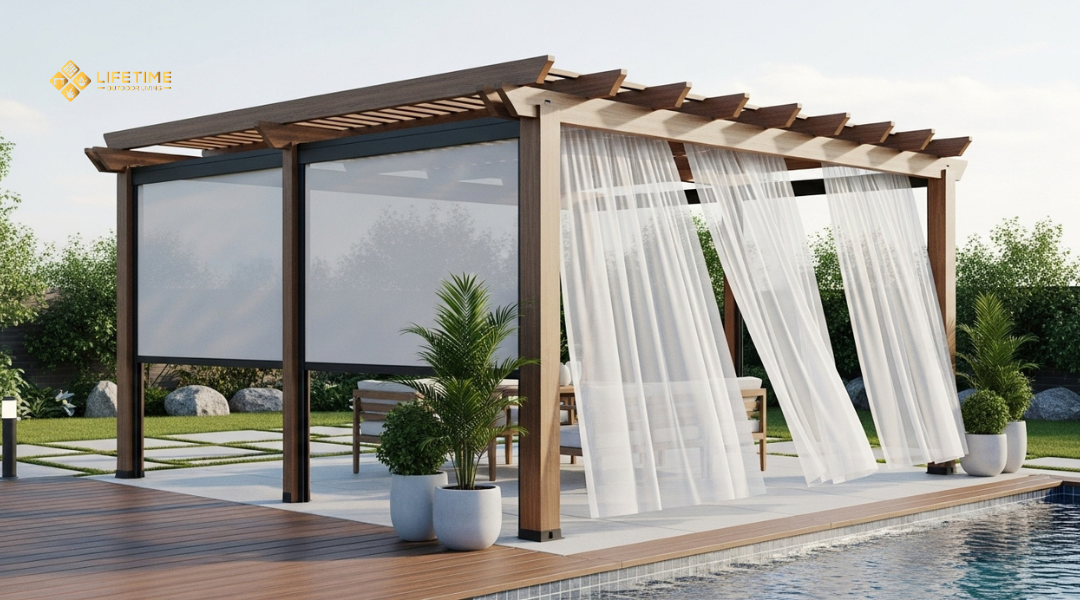
The open design allows for easy additions like retractable canopies, curtains, or screens for privacy and weather protection.
This adaptability ensures pergolas fit specific needs and site conditions without extensive renovation.
Cost Considerations for Pergolas
Pergolas generally cost less to build than fully covered patio structures. Costs depend on materials, size, and added features like lighting or retractable shades.
Maintenance also varies; wood pergolas require periodic sealing, while vinyl and metal options offer lower upkeep.
They provide a cost-effective way to increase outdoor living space and potentially enhance property value.
Advantages Of Installing a Patio Cover
A patio cover offers solid protection from various weather conditions while enhancing outdoor comfort. It integrates neatly with existing home structures and can be customized to balance budget and durability.
Year-Round Weather Protection
Patio covers provide shelter from rain, sun, and wind, making outdoor spaces usable throughout the year. They prevent water from pooling on patios and reduce sun exposure, which protects furniture and prevents heat buildup.
This protection extends usability of outdoor areas during different seasons and weather changes. Proper materials can also resist fading and damage caused by direct sunlight or moisture.
Integration with Existing Rooflines or Structures
Patio covers often attach directly to the house, creating a seamless design. This approach maintains the home’s architectural style rather than adding a disconnected structure.
They can be built at matching roof pitches and with similar materials to complement the existing exterior. This integration can increase curb appeal and maintain property value.
Enhanced Shade and Comfort
Unlike open pergolas, patio covers provide full shading, significantly reducing direct sunlight. This results in cooler temperatures beneath the cover, improving comfort during hot days.
Fans or lighting can easily be installed under patio covers, expanding outdoor usability into evenings or warm summer nights. This makes the space more functional for dining or relaxation.
Patio Cover Cost Factors
Costs depend on size, materials, and complexity of installation. Common materials include aluminum, wood, and vinyl, each with different price points and maintenance needs.
Labor costs rise with design complexity or if reinforcing an existing structure is needed. Budgeting should consider long-term durability and potential energy savings from reduced indoor heat gain.
Factors To Consider When Choosing Between the Two
Choosing between a pergola and a patio cover involves practical factors related to use, environment, costs, regulations, and future enhancements. Each element impacts the suitability and functionality of the structure in specific ways.
Intended Use of the Outdoor Space
The purpose behind the outdoor area is crucial. Pergolas are best suited for decorative, partially shaded spaces where air flow and aesthetics are priorities. They work well for dining areas or social spaces that benefit from light filtering through an open roof.
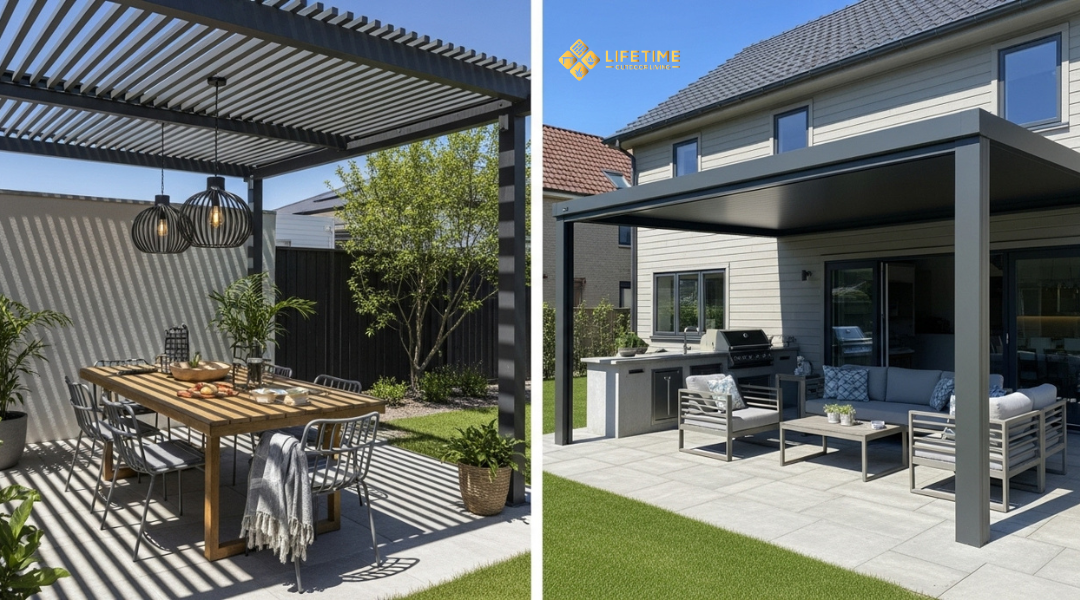
Patio covers provide full coverage, ideal for sun and rain protection. They suit spaces meant for year-round use or where maximum shade is required. Heavy-duty patio covers support activities needing shelter from weather, such as cooking or outdoor lounges.
Local Climate and Sun Exposure in Laguna Beach
Laguna Beach’s mild, Mediterranean climate influences the choice. Pergolas allow more sunlight and ventilation, which aligns with the mild weather but may offer less protection during summer peak heat or occasional rain.
Patio covers offer complete shielding from sunlight and rain, better for protecting outdoor furniture and providing consistent shade during warmer, sunnier months. Considering prevailing winds and sun angles can guide the design and placement.
Budget and Material Preferences
Pergolas generally cost less due to simpler structures and less roofing material. Materials range from wood and vinyl to aluminum, affecting maintenance and longevity.
Patio covers often involve higher costs because of full roofing and sturdier construction. They use materials like metal, polycarbonate, or solid wood, which vary in price and durability. Choosing budget-friendly, weather-resistant materials can reduce long-term expenses.
HOA Guidelines or Permit Requirements in Orange County
Local regulations in Orange County can affect the project. HOAs may have strict design or material rules influencing the choice between pergolas and patio covers.
Building permits are often required, especially for patio covers due to their size and permanence. Pergolas might have fewer restrictions if they’re considered decorative. Checking local codes avoids potential legal or compliance issues.
Future Add-Ons (e.g., Fans, Lights, Solar Panels)
The potential for enhancements influences the decision. Patio covers typically support heavier fixtures like ceiling fans, recessed lighting, and solar panels due to their solid roofs.
Pergolas may accommodate string lights or lighter accessories but can be limited in structural support for heavier add-ons. Planning for electrical wiring or solar installations early is essential for seamless integration.
Material Options And Customization For Both Structures
Choosing a pergola or patio cover involves selecting materials that suit climate, style, and maintenance needs. Coordination with surrounding landscaping and hardscaping enhances the overall aesthetic. Practical add-ons can improve comfort and functionality.
Wood, Vinyl, and Aluminum Choices
Wood is favored for its natural look and versatility. Cedar and redwood resist decay and insects but need regular sealing. Wood allows for detailed designs but requires more upkeep.
Vinyl offers low maintenance and durability. It resists rot and fading, making it a good choice for humid or coastal areas like Laguna Beach. Vinyl comes in limited colors but can mimic wood grain.
Aluminum is lightweight, rust-proof, and strong. It suits modern designs and requires minimal upkeep. Aluminum can be powder-coated in various colors for added customization. It withstands heavy sun exposure without warping or cracking.
Matching with Pavers, Turf, or Retaining Walls
Coordinating pergola or patio cover materials with paving stones, artificial turf, or retaining walls improves visual harmony. Natural stone or concrete pavers complement wood structures well.
Vinyl and aluminum fit cleanly with modern pavers or synthetic turf, emphasizing sleek lines. Using the same or complementary colors for mortar and edging can tie the spaces together.
Retaining walls built from similar or matching stone enhance continuity. Consistent textures and colors create a unified outdoor environment. This coordination also aids in defining separate functional zones.
Add-Ons: Lighting, Curtains, Vines, or Solar Panels
Lighting options include integrated LED fixtures or string lights for ambiance and safety. Weather-resistant curtains add privacy and shade while softening the structure’s look.
Climbing vines like jasmine or wisteria enhance pergolas by adding greenery and natural shade. However, they require regular maintenance to avoid damage.
Solar panels can be incorporated on patio covers to provide renewable energy while offering shade. This feature is practical and aligns with energy efficiency goals common in California homes.
Lifetime Outdoor Living’s Approach to Outdoor Structures
Lifetime Outdoor Living focuses on delivering tailored outdoor solutions that fit both style and function. Their process centers around collaboration, precision, and local expertise to ensure each project complements the homeowner’s vision and property.
Personalized Design Consultation and Material Selection
They start with an in-depth design consultation to understand the client’s lifestyle and space requirements. This includes discussing preferences for pergolas, patio covers, or a combination, as well as material options like wood, aluminum, or composite.
Material durability and maintenance needs are thoroughly reviewed to match the Southern California climate. Clients receive clear guidance on cost, appearance, and longevity to make informed decisions. By customizing each design, the final product reflects both personal taste and practical use.
Seamless Integration with Landscaping and Hardscaping
The team emphasizes a smooth transition between new structures and existing outdoor features. They coordinate with paving, planting, and garden layouts to create a cohesive look.
This integration ensures outdoor structures enhance curb appeal without disrupting established aesthetics. Thoughtful placement of columns, rooflines, and shading elements balances form and function while respecting surrounding greenery and hardscapes.
Local Experience Across Irvine, Newport Beach, and Beyond
With extensive projects throughout Irvine, Newport Beach, Laguna Beach, and neighboring areas, the company has deep familiarity with local building codes and environmental conditions.
This regional knowledge helps tailor structures for optimal shade, wind resistance, and style, addressing specific needs like coastal salt exposure or hillside terrain. Their reputation in these communities reflects consistent quality and reliability.
Warranty and Financing Options
Lifetime Outdoor Living offers warranties covering materials and workmanship, providing peace of mind on every installation. These guarantees protect against structural failure and finish degradation.
Flexible financing plans make premium outdoor structures more accessible by spreading costs over time. Transparent terms and competitive rates support homeowner budgets without compromising on quality.
Which One Is Right For You?
Choosing between a pergola and a patio cover depends on your needs for shade, style, and maintenance. Each option suits different outdoor lifestyles and budgets, and understanding their key differences helps determine the best fit.
Use Case Scenarios
A pergola works well for homeowners seeking a stylish, semi-shaded area. It offers filtered sunlight, making it suitable for outdoor dining or garden lounging without complete sun blockage. Pergolas often integrate climbing plants, enhancing aesthetics without heavy structural needs.
A patio cover provides full shade and protection from rain, ideal for those wanting year-round outdoor use. It suits families needing shelter or people with outdoor kitchens, as it guards furniture and appliances from weather exposure. In regions with frequent rain or intense sun, a patio cover offers practical benefits that pergolas don’t.
Quick Comparison Chart
| Feature | Pergola | Patio Cover |
|---|---|---|
| Shade Level | Partial, filtered | Full, solid |
| Weather Protection | Minimal (sun protection only) | Full (rain and sun) |
| Aesthetic Style | Decorative, open design | Solid, structured |
| Maintenance | Lower to medium | Medium to higher (depends on material) |
| Cost Range | Moderate | Generally higher |
| Installation Time | Shorter | Longer |
Expert Recommendations from Lifetime Outdoor Living
Lifetime Outdoor Living suggests pergolas for clients focused on enhancing backyard aesthetics without extensive weather coverage. They recommend pergolas when budget constraints prioritize style over full protection.
For clients needing outdoor spaces usable in all weather, they advise investing in patio covers. Their experts highlight quality materials like aluminum or treated wood to ensure durability. Proper installation and design tailored to climate conditions are stressed to maximize lifespan and usability.
In Laguna Beach’s coastal climate, balancing sun protection with corrosion resistance is a key consideration for both options.

